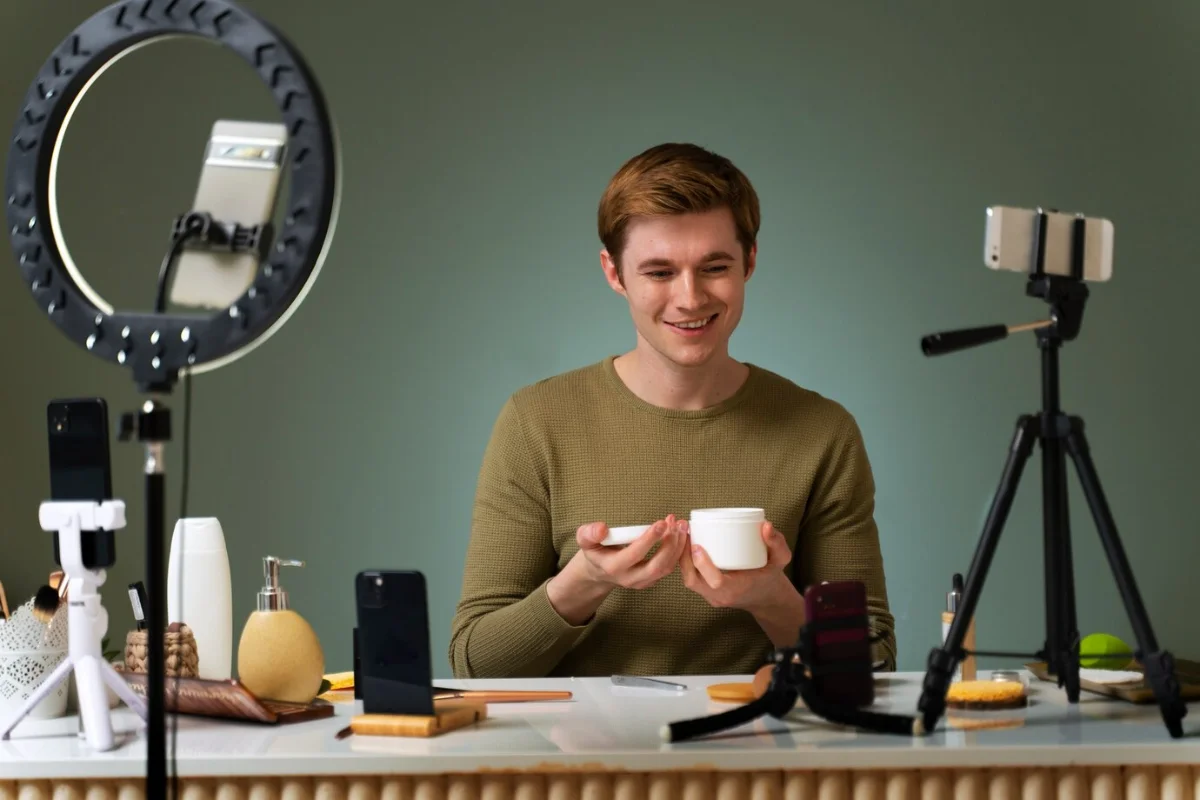The E-commerce Blog

The Impact of Wellness Trends on Consumer Purchasing Behavior
The Rise of Wellness-Driven Shopping
In recent years, wellness consumer behaviour has undergone a significant transformation. More and more, consumers are focusing on health when they shop. They want products that support their physical, mental, and emotional well-being. This change has affected many retail sectors like food, beauty, fashion, and tech. Brands now need to adjust to new retail trends.
The health and wellness industry is now worth billions. It includes organic foods, cruelty-free beauty products, and wearable fitness tech. Retailers who don’t follow these trends might lose their relevance. Today, conscious consumerism shapes how people make buying choices. This guide looks at how wellness trends shape what consumers buy. We’ll also discuss how retailers can take advantage of this rising demand.
Key Factors Driving Health-Focused Shopping
1. Increased Awareness of Health and Well-Being
Today, consumers know more about the health benefits, nutrition, and environmental effects of what they buy. The internet and social media make it easy for shoppers. They can learn about healthy lifestyle choices quickly.
Key Drivers:
- A growing emphasis on preventative healthcare.
- Influence of social media wellness influencers.
- Concerns over harmful ingredients in food, skincare, and household products.
2. The Demand for Natural, Organic, and Sustainable Products
Sustainability and wellness go hand in hand, leading to an increased demand for natural and eco-friendly products. Modern consumers actively seek items that are organic, ethically sourced, and free from toxic chemicals.
Popular Health-Focused Shopping Trends:
- Organic and plant-based foods.
- Sustainable fashion using biodegradable or recycled materials.
- Natural beauty and skincare products free from artificial additives.
3. The Role of Technology in Wellness Shopping
Technology has transformed how consumers approach health and wellness. Digital advancements, like wearable fitness devices and AI recommendations, have made wellness shopping easier. Now, it’s more personalised to meet individual needs.

Notable Tech Trends in Wellness Shopping:
- Smart fitness trackers monitoring steps, heart rate, and sleep quality.
- AI-powered skincare apps offering personalised skincare routines.
- Meal planning and nutrition apps tailored to dietary preferences.
4. Ethical Consumerism and Transparent Supply Chains
Consumers are increasingly holding brands accountable for their ethical and sustainability practices. Shoppers prefer businesses that disclose their sourcing methods, ingredient lists, and ethical commitments.
Retail Adaptations:
- Brands providing clear labelling for organic, vegan, or cruelty-free products.
- Retailers investing in fair-trade supply chains.
- Increased demand for carbon-neutral or zero-waste packaging.
How Retailers Are Adapting to Wellness Consumer Behaviour
1. Expanding Health-Focused Product Ranges
Retailers are changing their products to meet the demand for wellness items.
Examples of Retail Expansion:
- Supermarkets adding plant-based, gluten-free, and keto-friendly food sections.
- Beauty brands reformulating products to exclude parabens, sulphates, and synthetic fragrances.
- Clothing retailers launching athleisure and sustainable activewear collections.
2. Offering Personalised Shopping Experiences
Personalisation is a key driver in wellness consumer behaviour. Shoppers seek tailored solutions to meet their unique health and lifestyle goals.
Retail Strategies for Personalisation:
- AI-driven recommendations based on consumer health data.
- Subscription-based wellness boxes curated for individual needs.
- Customised vitamin and supplement plans.
3. Creating In-Store and Digital Wellness Experiences
Brands are adding immersive wellness experiences to their retail strategies. This change aims to attract health-conscious consumers.
Innovative Approaches:
- Hosting yoga classes, meditation workshops, or nutrition seminars in-store.
- Implementing virtual try-ons for beauty and skincare products.
- Using AI chatbots to provide personalised health and wellness advice online.
4. Leveraging Social Media and Influencer Marketing
Social media wellness culture is growing. Now, influencer collaborations are key to health-focused shopping trends.

Successful Influencer Strategies:
- Partnering with health experts, fitness influencers, and sustainable living advocates.
- Encouraging user-generated content with real wellness journeys.
- Using TikTok and Instagram to promote wellness-driven product launches.
5. Focusing on Transparency and Ethical Business Practices
Brands that embrace transparency build stronger trust and loyalty among health-conscious consumers.
Ways to Improve Transparency:
- Clearly stating nutritional information, ingredients, and sourcing.
- Obtaining organic, cruelty-free, and sustainability certifications.
- Implementing fair labour and ethical trade practices.
Case Studies: Brands Leading in Wellness Retail Trends
1. Whole Foods Market – Organic and Sustainable Shopping
Whole Foods is a great example of a retailer that serves wellness-focused shoppers by providing:
- A curated selection of organic, non-GMO, and sustainably sourced foods.
- Eco-friendly in-store shopping experiences, including zero-waste stations.
- Emphasis on locally sourced products to reduce carbon footprints.
2. Nike – Merging Health and Sustainability
Nike has embraced the intersection of fitness, sustainability, and technology by:
- Creating sustainable collections like Nike Move to Zero, using recycled materials.
- Launching Nike Training Club, a free wellness-focused app.
- Partnering with athletes and wellness influencers to promote a holistic fitness lifestyle.
3. Lush – Ethical and Sustainable Beauty
Lush has positioned itself as a pioneer in clean beauty by:
- Offering handmade, cruelty-free, and zero-waste beauty products.
- Introducing a naked packaging initiative, reducing plastic waste.
- Prioritising fair-trade ingredient sourcing.
4. Amazon – AI-Powered Personalised Wellness Shopping
Amazon has incorporated AI-driven health and wellness shopping solutions through:
- Smart recommendations based on consumer wellness interests.
- Voice-assistant capabilities for nutrition tracking and fitness guidance.
- Subscription models for recurring wellness product deliveries.
The Future of Wellness Consumer Behaviour
1. Growth of AI and Personalised Health Recommendations
Artificial Intelligence will continue to play a significant role in tailored shopping experiences.
Future Developments:
- AI-driven health diagnostics for personalised product recommendations.
- Smart devices providing real-time health insights to influence purchases.
- Digital wellness coaches guiding consumers to better health choices.
2. Rise of Subscription-Based Wellness Services
Consumers will continue to embrace subscription models for convenience and consistency.
Subscription Trends:
- Monthly vitamin, supplement, and superfood deliveries.
- Digital fitness memberships, including guided workouts and meditation apps.
- Beauty and skincare boxes tailored to individual skin types and concerns.
3. Expansion of Ethical and Sustainable Shopping Practices
Consumers will demand greater sustainability efforts from brands.
What Retailers Need to Focus On:
- Expanding carbon-neutral and zero-waste initiatives.
- Offering incentives for recycling and ethical shopping choices.
- Increasing locally sourced and ethically manufactured product options.
The Lasting Influence of Wellness on Retail
Wellness consumer behaviour is changing retail trends. Brands now focus on health-centred shopping experiences to meet today’s well-being needs. Consumers want transparency, sustainability, and personalisation. Brands that ignore these values may become obsolete.
Retailers can draw in health-focused customers by offering organic products, using digital wellness tools, and following ethical practices. This builds trust and promotes long-term brand loyalty.
To stay relevant in the changing retail landscape, businesses must be agile and innovative. The wellness movement is evolving, so they need to respond to new health trends.









